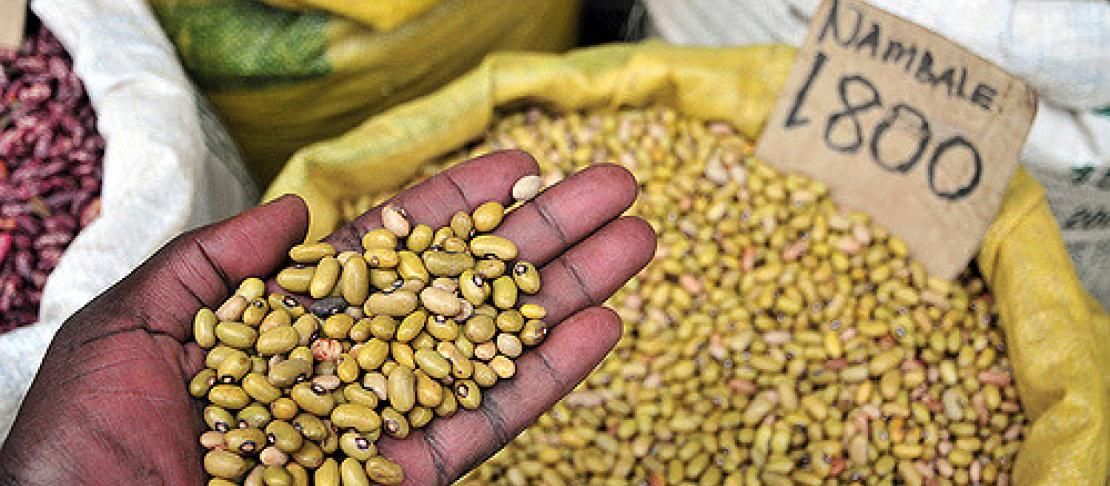Looking for food security? Follow the money

The urgency of climate change prompts a fresh understanding of global development. But new perspectives are not always helpful.
Exasperated pundits keep asking why we need to invent new approaches when we could build on plentiful experience among communities [1] and professionals [2].
A salient example is food security. As evidence mounts that climate change is a serious threat to current and future food systems, the climate change community is seeking meaningful ways to measure food security at household and national levels. Food prices seem an obvious metric, as identified at the 2015 IPCC Expert Meeting on agriculture and food security. But, as Tom Hertel points out in his commentary Food security under climate change [3], household food consumption depends on the balance between prices and income. Many farmers and farm workers benefit from higher food prices via better farmgate sales, more jobs or higher wages, so long as they sell more than they buy. In countries where poverty is concentrated among agricultural households, such as Bangladesh or Uganda, higher food prices should lead to improved incomes and food security for the poor.
This conclusion is hardly new. The 2006-2008 food price crisis precipitated much discussion and strong evidence, including Jo Swinnen’s insights [4] into how high food prices became the new global “bad” despite their demonstrable benefits to poverty reduction in many countries. But, as Hertel emphasises, not all poor households will benefit – neither now, nor in the future. Climate change will most likely drive down agricultural production and drive up food prices. Previously published modelling by Hertel and colleagues [5] suggests that many poor rural households will paradoxically boost their food security as climate change advances, as they gain more from price rises and trade advantages than they lose from falling production. But urban households will tend to suffer.
Hertel thus concludes that projecting the future of food security under climate change requires much more attention to future trends in the distribution of poverty – for example between rural and urban areas, women and men, employees and self-employed farmers – to complement our recent focus on future agricultural production. As people become more urban and agriculture more commercial, food price rises will increasingly disadvantage more people than they benefit, even in countries with large farming sectors like Brazil [6]. Yet the deepest poverty may well remain in rural areas, and here higher food prices can be an effective engine for raising incomes.
To return to measurement, if forced to choose a single metric for food security under climate change, which would it be? Hertel’s article skips a direct recommendation, but in conversation he opts for real household income over food prices [7]. Though uni-dimensional, income offers a fair proxy for the multiple factors that contribute to nutrition in any household: quantity and quality of food intake, but also sanitation, healthcare, education, shelter and safety. As we shine a renewed spotlight on food security it helps to remember that poverty reduction, rather than increased food production, is its primary driver.
References
[1] Reid, H., Chambwera, M. and Murray, L. 2013. Tried and tested: Learning from farmers on adaptation to climate change.
[2] Mercer, J. 2010. Disaster risk reduction or climate change adaptation: Are we reinventing the wheel? Journal of International Development 22: 247-264.
[3] Hertel, T.W. 2016. Food security under climate change. Nature Climate Change 6: 10-13.
[4] Swinnen, J.F.M. 2011. The right price of food. Development Policy Review 29: 667–688.
[5] Hertel, T. W., Burke, M. B. & Lobell, D. B. 2010. The Poverty Implications of Climate-Induced Crop Yield Changes by 2030. Global Environmental Change 20: 577–585.
[6] Ferreira, F. 2011. Are Higher Food Prices Really Bad for the Poor?
[7] Other metrics, such as weight, height and upper arm measurements among children, offer more direct assessments of nutritional outcomes in households
This is the February 2016 edition of AgClim Letters, a regular analysis on science and policy written by Sonja Vermeulen, Head of Research for CCAFS. Sign up to receive AgClim Letters e-bulletin and read past editions. Your comments are welcome below.
